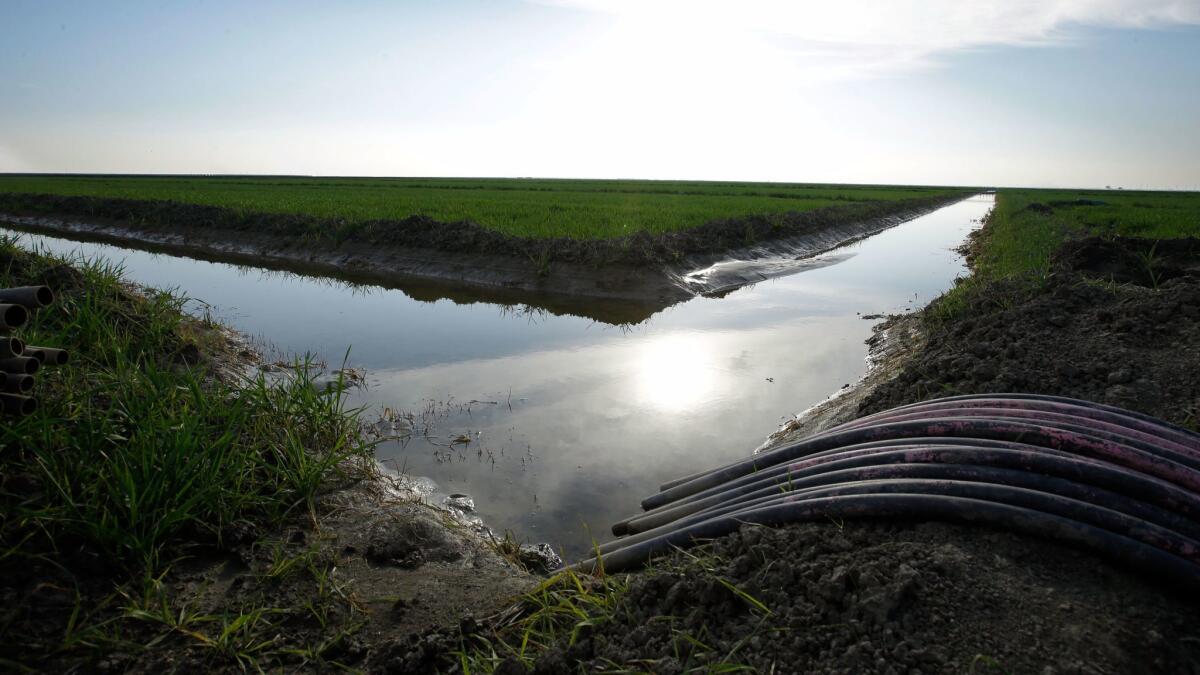Editorial: Southern California needs water. Stop waffling over the delta tunnels and dig

Twentieth century Southern California quenched its thirst with a series of ingenious projects, from the aqueducts that bring snowmelt from the Eastern Sierra to Los Angeles, and the dams along the Colorado River that impound water from the Rockies, to the State Water Project that directs the flow of the distant Feather River through the Sacramento River, the Sacramento-San Joaquin River Delta, down the California Aqueduct and over the Tehachapis. These engineering feats brought us water and wealth — and bred waste, although for decades Southern Californians were blissfully unaware of just how foolish it was to keep front yards emerald green in August or to turn five gallons of the world’s most pristine water into sewage with every flush of the toilet.
Times change. We are well into the 21st century, recovering from a historic drought and reckoning with changing climate patterns and smaller snowpacks. The great water engineering feats of this era will more likely take the form of new information technology that help us track every drop. Although civil engineering projects will still be needed — to capture and cleanse stormwater, to recycle sewage, to make salty groundwater or even seawater drinkable — most will be local projects that collect and distribute local water.
But one great project proposed in the last century remains uncompleted. The essential question about the California WaterFix — the proposed $17 billion, 40-mile-long twin tunnels to shore up the State Water Project by diverting Southern California-bound water around the fragile delta — is whether it’s a 20th century notion whose time has come and gone, or the necessary last link in a system that must be finished before we can finally turn our full attention to the next generation of water thinking and engineering.
Southern California needs the delta tunnels to secure (not to increase) its water supply.
It comes down to this: We need the tunnels. Southern California needs them to secure (not to increase) its water supply. So does much of the Bay Area, despite the false belief by many residents there that they are independent of the delta and imported water. So does the delta itself, which is suffering from the operation of pumps at its southern end that reverse the flow of a portion of the San Joaquin River and suck migratory fish to their doom. So does the entire state, even those portions that don’t directly use delta water, because they are economically intertwined with agricultural industries and urban areas that do rely on that water. California should not for a moment slow work on the next generation of sustainable, local water projects, but they will take time, and many of them are as yet untested, at least on the scale we will need them to be. The state needs backup. The tunnels provide it.
If California’s water is its lifeblood, its heart is the delta, where the Sacramento and San Joaquin Rivers meet and carry much of the state’s rainwater and melted snow through a succession of bays and to the Pacific — or else, through diversions, to irrigate Central Valley fields and provide water to urban areas from Silicon Valley to L.A. and many points south. The tunnels are a kind of coronary bypass, sending Sacramento River water to the aqueduct without it first having to go through the delta.
The point of the project is not to send Southern California more water, but rather to lessen the reductions that we will inevitably see in coming years. Imports are likely to continue to decline from each of the great, but aging, projects. Los Angeles will take less from the Owens River as the city reckons with the years of environmental damage William Mulholland’s project visited on Mono Lake and the Owens Valley. Southern California cities will get less from the Colorado River, as other states exercise rights they didn’t need when their populations and economies were smaller. Even with the tunnels, the delta will likely provide less. But the tunnels will allow water to be diverted to Central and Southern California during wet winter storm pulses when scientists have determined that the delta ecology has what it needs.
The physical infrastructure will be only as environmentally responsible as the laws and regulations that govern it, and many of the details have yet to be determined.
One thing urban ratepayers can count on, though, is that their water bills will go up. The issue is whether they will be paying more because they are financing a project that keeps a sustainable amount of water coming to them, or because there is no project and water therefore becomes a scarcer and more precious commodity.
There is a lot of work to be done on water reclamation, recapture and reuse, which may eventually sustain us. In the meantime — build the tunnels.
Follow the Opinion section on Twitter @latimesopinion and Facebook
More to Read
A cure for the common opinion
Get thought-provoking perspectives with our weekly newsletter.
You may occasionally receive promotional content from the Los Angeles Times.






